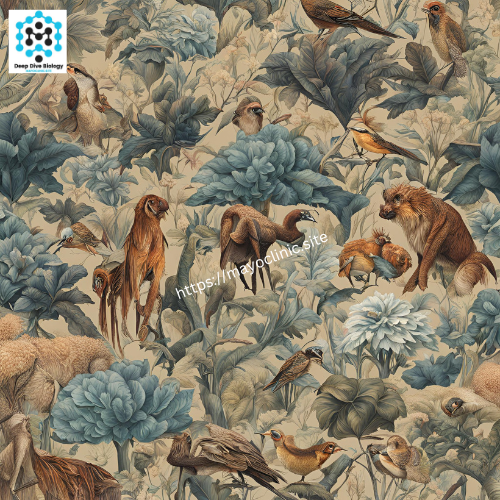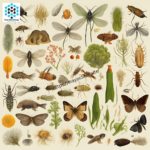Understanding Species and Speciation: From Linnaeus to Modern Examples
In this video, we are going to explore the concept of species and how new species are created. The term species was first used by the 18th-century naturalist Carl Linnaeus to describe a group of very similar organisms.
Linnaeus was deeply interested in classifying all living things. He developed a system for grouping organisms and identifying their relationships based on their physical features. This system grouped organisms with the most similar characteristics together, which he called a species.
What is a Species?
A species is defined as a group of organisms that can breed with one another and produce fertile offspring. For example, all breeds of horses, including ponies, can mate and produce fertile offspring.
However, although horses can mate with donkeys, their offspring (mules) are not fertile. This inability to produce fertile offspring places horses and donkeys in separate species groups, even though they are closely related.
The species group is the smallest unit of biological classification and is always given a Greek or Latin name. For horses, this name is Equus ferus, while for donkeys, it is Equus africanus.
Both species belong to the larger genus Equus. These two species evolved through the process of natural selection from a common ancestor.
The Process of Speciation
The emergence of a new species from an existing one occurs through a process called speciation. Speciation happens as a result of natural selection.
Some scientists believe that speciation occurs continuously over long periods, while others think it happens only rarely and in short bursts, sometimes due to dramatic environmental events.
Example of Speciation: The Apple Maggot Fly
An example of a speciation event occurred in North America in the 19th century. Hawthorn flies traditionally laid their eggs on hawthorn fruit. After the introduction of non-native apple trees, a new type of hawthorn fly began laying its eggs on apples.
Over time, this new fly species stopped laying eggs on hawthorn fruit and preferred apples instead. This new fly is now called the apple maggot fly.
Human Influence on Speciation
Human beings can directly influence or even cause speciation. For instance, selective breeding of livestock over several years led to the creation of the domestic sheep (Ovis aries), which is unable to produce fertile offspring when mated with Ovis orientalis, the species from which it descended.
Conclusion
In summary, a species is a group of organisms that can produce fertile offspring. New species can emerge for various reasons, such as changes in habitat and human activities like selective breeding.
Examples like the apple maggot fly and domestic sheep illustrate how speciation can occur through natural selection and human intervention. Understanding these processes helps us appreciate the diversity of life on Earth. See if you can find other examples of speciation in nature!
Frequently Asked Questions About Species and Speciation
What is a species?
A species is a organization of microbes that can crossbreed and production fertile generation. This means they share similar characteristics and can reproduce to create more of their kind.
How did Carl Linnaeus define species?
Carl Linnaeus, an 18th-century naturalist, defined species based on physical characteristics. He grouped organisms with similar features together, creating a hierarchical classification system that starts from species and goes up to kingdom and domain.
Can different species interbreed?
Different species can sometimes interbreed, but their offspring are usually not fertile. For example, horses and donkeys can mate to produce mules, but mules are sterile and cannot reproduce.
What is speciation?
Speciation is the process through which new species emerge from existing ones. This can happen through natural selection, where organisms with advantageous traits survive and reproduce, eventually leading to the formation of a new species.
How does natural selection lead to speciation?
Natural selection leads to speciation by favoring organisms with traits that are better suited to their environment. Over time, these traits become more common in the population, and if the differences become significant enough, a new species can emerge.
What is an example of speciation?
An example of speciation is the apple maggot fly. Originally, hawthorn flies laid eggs on hawthorn fruit. After the introduction of apple trees in North America, a new fly species emerged that preferred to lay eggs on apples, leading to the apple maggot fly.
Can humans cause speciation?
Yes, humans can influence speciation through activities like selective breeding. For instance, domestic sheep were bred over several years to have certain desirable traits, resulting in a species that cannot produce fertile offspring with its wild ancestor.
What are the classification levels above species?
The classification levels above species are genus, family, order, class, phylum, kingdom, and domain. Each level groups organisms with increasing degrees of similarity.
Why is the species level important in biological classification?
The species level is important because it represents the most specific group in the classification system, consisting of organisms that are very similar and can reproduce fertile offspring. It helps scientists understand and organize the diversity of life on Earth.
Can environmental changes cause speciation?
Yes, environmental changes can lead to speciation. When an environment changes, organisms must adapt to survive. Those with beneficial traits are more likely to reproduce and pass on those traits, eventually leading to the development of a new species.

